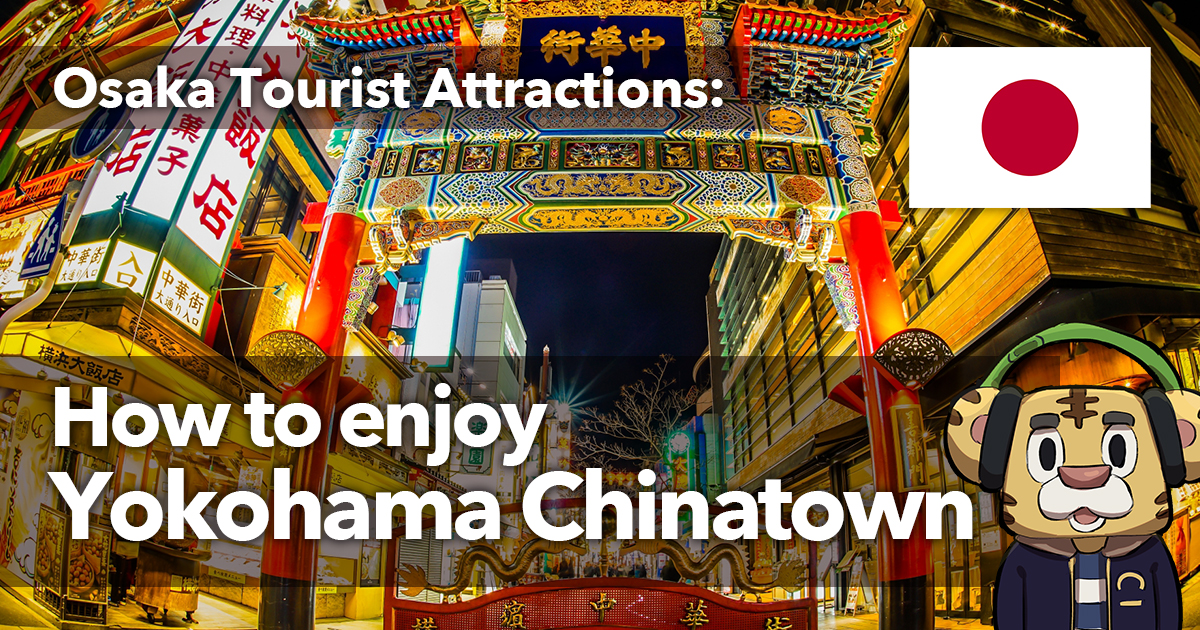Introduction
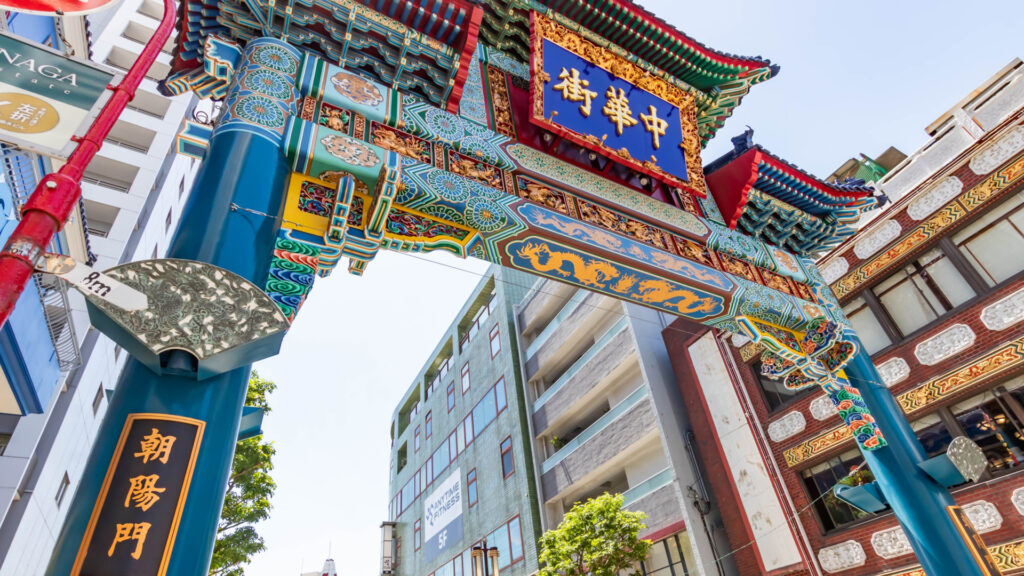
Yokohama Chinatown is the largest Chinatown in Japan and a popular tourist attraction that attracts many visitors from Japan and abroad. Located in Yokohama City, Kanagawa Prefecture, its history spans more than 150 years, and the development of Chinatown began with the opening of the port of Yokohama in the late 19th century and the increase in Chinese immigration. Today, with some 500 Chinese restaurants and stores, visitors can feel as if they are visiting a part of China.
The main attraction of Yokohama Chinatown is the gourmet experience of its diverse Chinese cuisine. Visitors can enjoy a variety of regional cuisines, including authentic Beijing, Shanghai, Cantonese, and Sichuan cuisines. In particular, popular dishes such as dim sum, Peking duck, mapo tofu, and shark fin soup are not to be missed. Eating your way around is also a pleasure, and you can enjoy snacks such as baked xiaolongbao, sesame dumplings, and apricot bean curd.
In addition, Yokohama Chinatown attracts visitors with its beautiful architecture and cultural atmosphere. At the entrance is the brightly colored Chinese Gate (Tile Tower), the design of which is based on Feng Shui. The Guan Di Temple, located in the center of the city, is dedicated to Guan Yu, the famous figure from the “Romance of the Three Kingdoms,” and is said to bring peace and prosperity to visitors. Other historical buildings such as the Mazu Temple and the Chinese School are scattered throughout the area, offering a wealth of cultural attractions.
Yokohama Chinatown is a lively place day and night. During the day, visitors can enjoy the bustling markets and street performances, and at night, the lanterns and neon lights create a magical scene. There are also many seasonal events, and you can experience traditional Chinese festivals such as the Chinese New Year Festival and Mid-Autumn Festival.
This article provides detailed information on how to enjoy Yokohama Chinatown. We have covered information to help you plan your visit and enjoy the wonderful experience that Yokohama Chinatown has to offer.
History and Culture of the Sightseeing Destination
Yokohama Chinatown is a tourist destination that attracts visitors with its rich history and unique culture. In this section, you will learn more about the historical background and cultural features of Yokohama Chinatown.
Historical Background
The history of Yokohama Chinatown dates back to the opening of the port of Yokohama in 1859. The opening of the port attracted many Chinese immigrants to Yokohama, and Chinatown was formed as a center for their daily lives and businesses. Early immigrants opened stores selling foodstuffs and goods from mainland China, which gradually grew in number.
In 1909, the first Chinese school was established to provide education for the next generation of Chinese Japanese. From this time on, Yokohama Chinatown developed not only as a commercial district, but also as a cultural hub. After World War II, Chinatown was rebuilt and an even greater variety of stores and restaurants were added, creating the bustling neighborhood we know today.
Cultural Characteristics
The culture of Yokohama Chinatown is a blend of diverse local Chinese cultures. Walking through Chinatown, one can find restaurants reflecting the regional characteristics of Beijing, Shanghai, Cantonese, Szechuan, and other cuisines. This is a testament to the coexistence in one city of food cultures brought by immigrants from different regions.
Yokohama Chinatown is also home to many traditional Chinese buildings. The brightly colored Chinese gates (tile towers) stand at the entrances to the town and welcome visitors. These gates were designed according to Feng Shui, and each has its own unique design and meaning.
In addition, temples such as the Guantian Temple and the Mazu Temple illustrate the religious aspect of Yokohama Chinatown. The Guan Ti Mausoleum is dedicated to the Three Kingdoms hero Guan Yu, and is visited by many as a place to pray for business prosperity and peace. The Mazu Temple is dedicated to Mazu, the goddess of the sea, and is known as a place to pray for safe voyages and good fortune.
Seasonal events are also part of the culture of Yokohama Chinatown. Traditional Chinese festivals such as the Spring Festival (Chinese New Year) and Mid-Autumn Festival are celebrated in grand style, with lion dances, dragon dances, fireworks, and other spectacular events. These festivals provide an important opportunity to show visitors the charm of Chinese culture.
Yokohama Chinatown offers visitors a deep sense of its history and culture. Visitors can fully enjoy the charm of Chinese culture through its rich food culture, beautiful architecture, and diverse events.
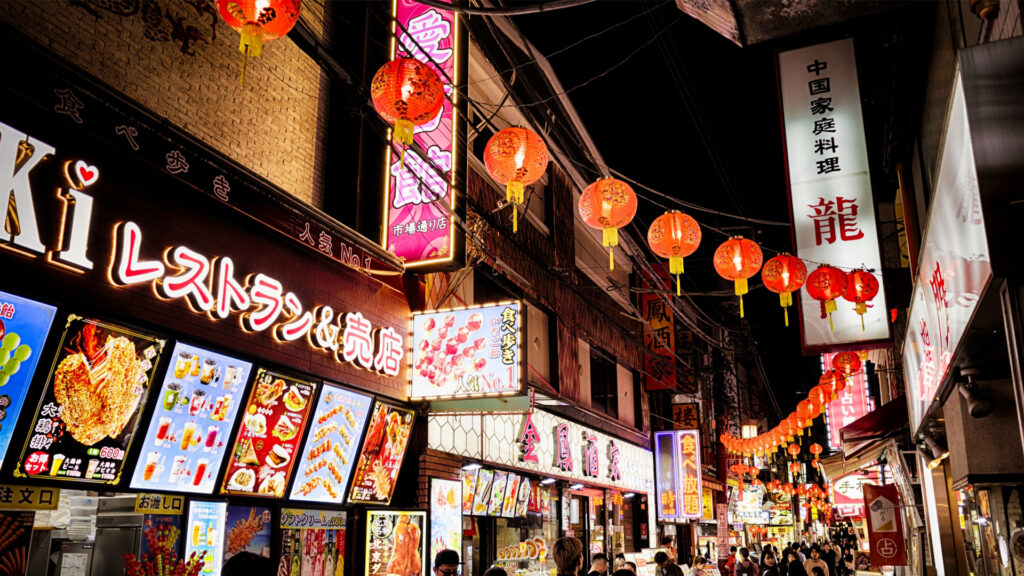
Places to visit
Yokohama Chinatown attracts visitors with its diverse culture and rich culinary experiences. Here are some suggestions for the best time of year to visit Yokohama Chinatown, the main attractions, and some things to keep in mind when sightseeing.
Suggested times of year to visit
The best times to visit Yokohama Chinatown are spring and fall. Spring (March to May) has a milder climate, especially during the Chinese New Year when there are spectacular parades and events. Autumn (September to November) is cooler and more pleasant, with festivities such as Mid-Autumn Festival celebrations. These are the best times to explore and eat outdoors.
Major tourist attractions and popular spots in the area
Yokohama Chinatown offers many attractions. Below are some of the most popular spots that you should not miss when visiting.
- China Gate (Tile Tower): The brightly colored gates that stand at the entrance to Chinatown are designed according to Feng Shui, each with a different design and meaning. It is an ideal starting point for sightseeing.
- Guantian Temple: This temple, dedicated to Guan Yu of the Three Kingdoms fame, attracts visitors to pray for business prosperity and peace. The temple is characterized by its beautiful decorations and quiet atmosphere.
- Mazu Temple: This temple is dedicated to Mazu, the goddess of the sea, and is a place to pray for safe and lucky voyages. The temple’s historical architecture and cultural significance can be felt here.
- Yokohama Daisekai: A complex of tourist attractions and entertainment facilities where visitors can enjoy shopping, dining, and art experiences.
- Eating Spots: There are many areas to enjoy the tempting snacks of Yokohama Chinatown, such as baked xiaolongbao, sesame dumplings, and apricot bean curd. In particular, the street near “Zenrinmon” is home to many eating spots.
Points to note at tourist attractions
When visiting Yokohama Chinatown, it is best to keep in mind a few things to keep in mind.
- Avoid crowds: It can get very crowded, especially on weekends and holidays. Consider visiting early in the morning or on a weekday to avoid the crowds and enjoy a more relaxed visit.
- Wear comfortable walking shoes: It is recommended that you wear comfortable walking shoes as you will be walking most of the way through Chinatown.
- Weather Watch: Due to the outdoor activities, please be aware of weather conditions and bring an umbrella and warm clothing if necessary.
- Prepare cash: Credit cards may not be accepted at some stores. It is a good idea to have cash on hand.
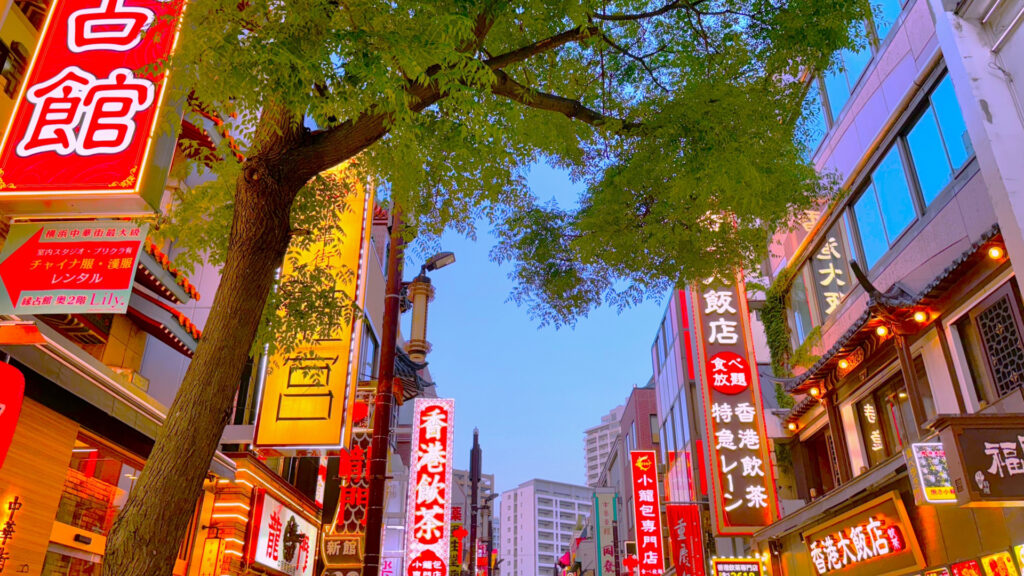
Access
Access to Yokohama Chinatown is very convenient and smooth from Haneda and Narita airports. Below are details on each major access method.
Access from Haneda Airport
Access to Yokohama Chinatown from Haneda Airport is as follows.
By train.
- Keikyu Line: Take the Keikyu Line Airport Express from Haneda Airport to Yokohama Station in approximately 20 minutes.
- Minatomirai Line from Yokohama Station: Transfer to the Minatomirai Line at Yokohama Station and get off at Motomachi-Chukagai Station. The trip takes about 10 minutes. From Motomachi-Chukagai Station, it is a short walk to Chinatown.
If you take the Limousine Bus
- To Yokohama City Air Terminal: Take a limousine bus from Haneda Airport to Yokohama City Air Terminal (YCAT).
Access from Narita Airport
Access from Narita Airport to Yokohama Chinatown is as follows.
If you take the train.
- Narita Express (N’EX): Take the JR Narita Express train from Narita Airport to Yokohama Station (approx. 90 minutes).
- Minatomirai Line from Yokohama Station: Transfer to the Minatomirai Line at Yokohama Station and get off at Motomachi/China Town Station. The trip takes about 10 minutes.
If you take the Limousine Bus
- To Yokohama City Air Terminal: Take a limousine bus from Narita Airport to Yokohama City Air Terminal (YCAT).
Access from Yokohama
Access to Yokohama Chinatown from Yokohama City is very convenient.
If you take the train
- Minatomirai Line: Take the Minatomirai Line from Yokohama Station to Motomachi-Chukagai Station. The trip takes about 10 minutes. From Motomachi-Chukagai Station, it is a short walk to Chinatown.
By bus.
- City Bus: Take a city bus departing from the East Exit of Yokohama Station and get off at the “Motomachi-Chukagai” stop. From the bus stop, it is approximately a 5-minute walk to Chinatown.
Taxi: Take a taxi**.
- Taxi: A cab from Yokohama Station will take approximately 15 minutes to Chinatown. The fare is approximately 1,500 to 2,000 yen.
Hours of Operation, Admission Fees
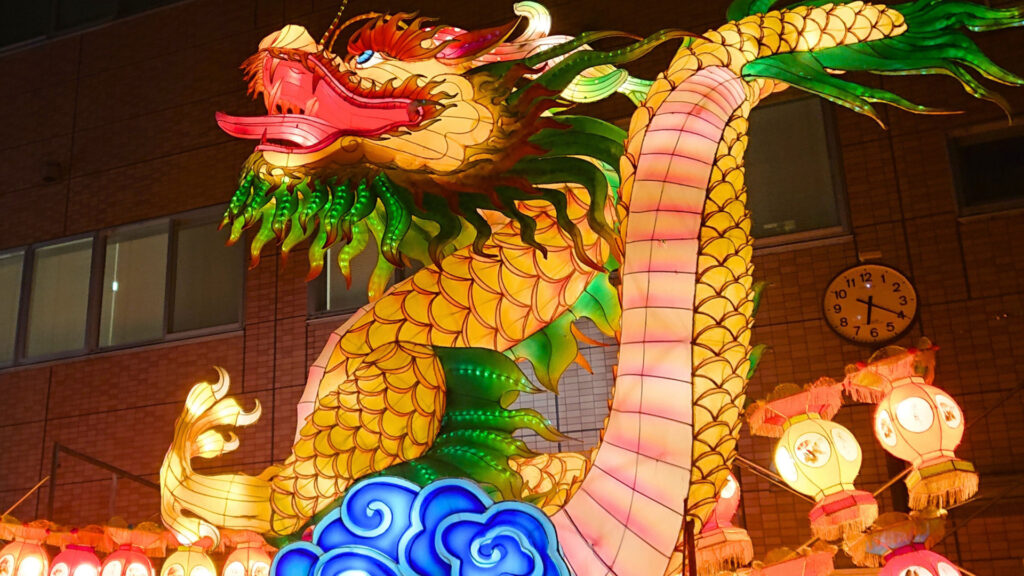
Yokohama Chinatown is a sightseeing spot where visitors can enjoy its diverse food culture and beautiful architecture. Here are details on the opening hours and admission fees for the main facilities in Yokohama Chinatown.
Business Hours
Opening hours for stores and restaurants in Yokohama Chinatown vary from one establishment to another, but in general they are as follows
- Restaurants: Most restaurants are open from 11:00 AM to 10:00 PM. Some establishments may take a break between lunch and dinner hours, so it is best to check before visiting.
- Shops: Shops are generally open from 10 am to 8 pm. Some stores are open late, especially on weekends and holidays.
- Tourist Facilities: Tourist facilities such as the Guantian Temple and Mazu Temple are generally open from 9:00 am to 5:00 pm. However, hours are subject to change during special events.
Admission Fees
Most areas of Yokohama Chinatown are free to explore and do not charge an admission fee. However, certain tourist facilities may require an admission fee.
- Guantian Temple: Admission is free, but there may be an additional fee if you wish to pay a visit or have an exorcism.
- Mazu Temple: Admission is also free. Admission is also free, but it is customary to make a monetary donation when visiting the temple.
- Yokohama Daisekai: Yokohama Daisekai is a combination of sightseeing and entertainment, and admission fees are set according to each attraction. As an example, admission to the museum is 1,500 yen for adults, 1,200 yen for t junior high and high school students, and 800 yen for children.
Special Events
Yokohama Chinatown hosts many events throughout the year. Traditional festivals such as Chinese New Year and Mid-Autumn Festival are especially popular with visitors, with special programs and parades. Special admission fees and tickets may be required in some areas during these events, so it is recommended to check the official website in advance.
Yokohama Chinatown is a sightseeing spot that can be enjoyed all year round. By checking the opening hours of stores and tourist facilities and planning your visit accordingly, you can enjoy a fulfilling sightseeing experience. Many areas offer free admission, but certain facilities and events may require a fee, so be sure to check in advance. Have a wonderful time in Yokohama Chinatown!
Summary

Yokohama Chinatown is the largest Chinatown in Japan and attracts many tourists because of its rich history and culture. The history of Yokohama Chinatown dates back to the opening of the Port of Yokohama in 1859, and today it is home to approximately 500 Chinese restaurants and stores. The best times to visit are spring and fall, especially during the Chinese New Year and Mid-Autumn Festival, when spectacular events are held. Major attractions include the colorful Chinese Gate (Tile Tower), the Guantian Temple, Mazu Temple, and Yokohama Daisekai. Many restaurants offer authentic Chinese cuisine, and there are plenty of places to eat and drink.
Yokohama Chinatown is very conveniently located and can be easily accessed by train or limousine bus from Haneda or Narita airports. It is also easily reached from Yokohama City by taking the Minatomirai Line and getting off at Motomachi/China Town Station. Hours of operation vary with each store or facility, but generally restaurants are open from 11:00 a.m. to 10:00 p.m. and stores are open from 10:00 a.m. to 8:00 p.m. Admission to most areas is free, but certain tourist facilities and events may charge an admission fee.
Yokohama Chinatown is a tourist destination where visitors can enjoy both culinary culture and historical architecture at the same time. Plan your visit accordingly and enjoy the variety of gourmet foods, beautiful scenery, and rich culture. We hope your visit will be a wonderful experience.

